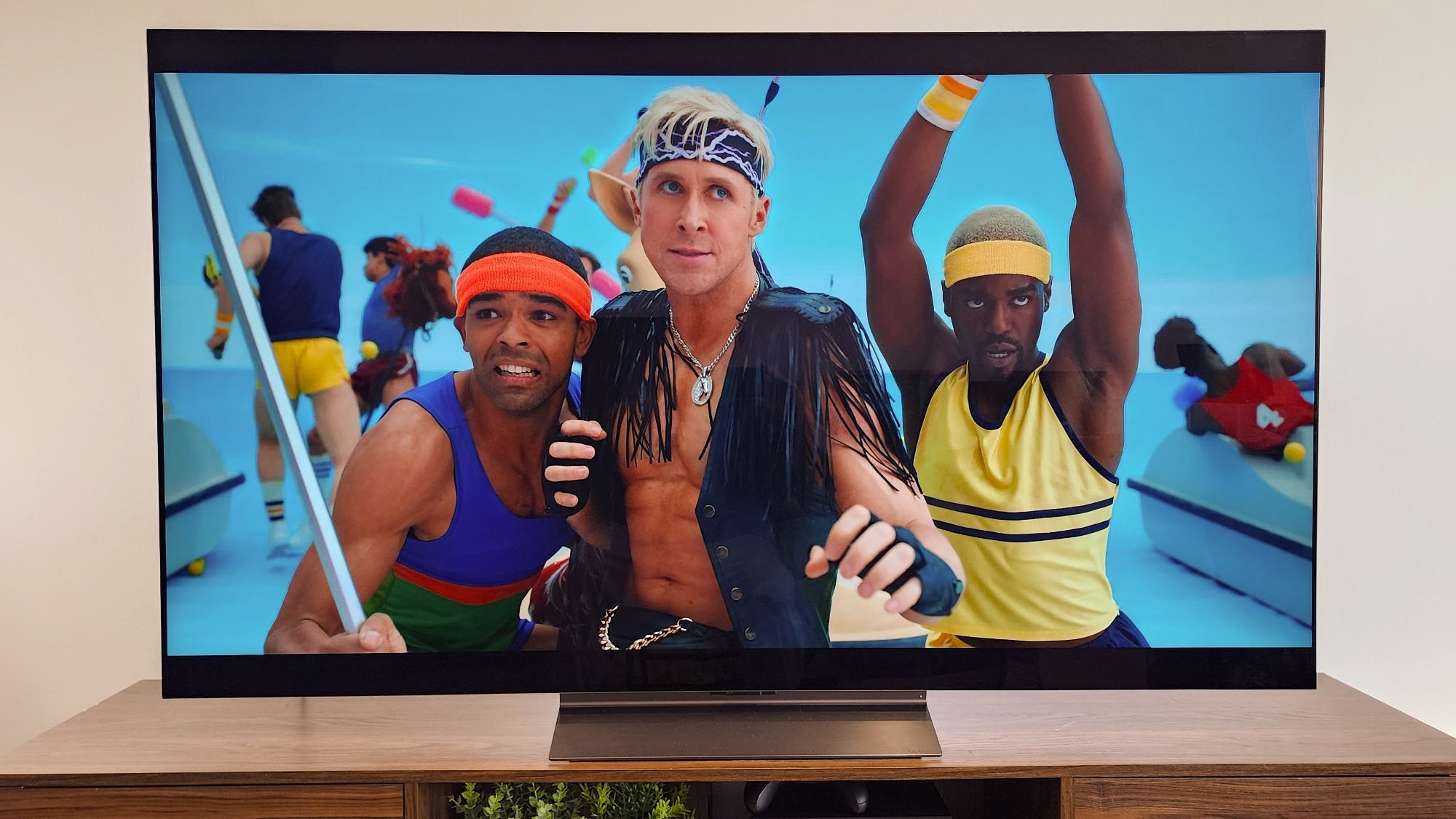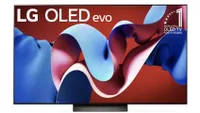
We’ve only had it in our testing labs for a few days now, but one thing’s become clear at this point: The LG C4 OLED is a very special TV. In terms of color accuracy, color saturation and, most importantly, peak brightness levels, the C4 has surpassed all of our expectations.
We’ll break down all the metrics in just a minute, but brightness is an important to talk about because, for years, OLED TVs were held to a different standard than LED-LCD TVs for brightness. Now, finally, OLED is on par with LED-LCD TVs in one of the most important display metrics.
Not only does this have some very practical advantages — you can finally move that OLED out from the light-controlled basement into your living room — but, on a larger scale, it’s likely to change how the industry talks about OLED TVs moving forward.
It's still early days, but from the lab results we're seeing so far, the new age of OLED has begun and the LG C4 OLED is leading the charge.
LG C4 OLED test results
| Row 0 - Cell 0 | LG C4 OLED | LG G3 OLED | Samsung S95C | Sony Bravia XR-65A95K |
| Price for a 65-inch TV | $2,699 | $3,300 | $3,300 | $3,499 |
| SDR Brightness (10%, in nits) | 332 | 326 | 249 | 297 |
| Delta-E (lower is better) | 1.8201 | 1.8611 | 1.4542 | 3.3223 |
| Rec. 709 Gamut Coverage | 98.9136 | 99.7631 | 98.7273 | 110.8434 |
| HDR Brightness (10%, in nits) | 1148 | 1361 | 1369 | 994 |
| UHDA-P3 Gamut Coverage | 97.93 | 96.73 | 99.09 | 99.95 |
| Rec. 2020 Gamut Coverage | 72.16 | 72.49 | 74.47 | 89.44 |
| Input Lag (ms) | 12.9/9.2 | 12.9/9.2 | 9.2 | 16.1 |
The new bar for OLED TV brightness
What are we so excited about? Look at that HDR peak brightness line. Usually it's here where you'd see maybe 600 or 700 nits for LG's C-Series OLED. But the LG C4 OLED hit close to 1,150 nits. That's almost a 40% increase in brightness year over year.
The LG C4 OLED hit close to 1,150 nits. That's almost a 40% increase in brightness year over year.
Now, to be 100% clear, this isn’t the first time we’ve seen an OLED TV surpass 1,000 nits in peak brightness. As soon as LG G3 OLED got the META panels from LG Display, we cleared the 1,000-nit mark. Heck, every QD-OLED we’ve seen from Sony and Samsung clears well above 1,000 nits, as you can see from the chart above.
But the catch is that those TVs are the high-end models in their respective ranges. The LG C4 OLED is the mid-range model that’s within the price range of average cinephiles.
Get instant access to breaking news, the hottest reviews, great deals and helpful tips.
With its boosted brightness, you no longer have to worry about limiting the amount of ambient brightness in the room. Direct glare is going to cause issues because of the all-glass front panel (see here for how to reduce glare) but ambient light should no longer cause color desaturation and reduce contrast.
We’ll still need to confirm all of this with our battery of anecdotal testing but, on paper, the C4 should have what it takes to contend against a fair amount of ambient light.
LG 42" C4 4K OLED TV: was $1,499 now $1,296 @ Walmart
The C4 is LG's new flagship OLED TV. It's powered by LG's A9 processor and features a 120Hz panel, Dolby Vision/ HDR10/HLG support, built-in Amazon Alexa, four HDMI 2.1 ports, and Apple AirPlay 2 support. It's also one of the few OLED TVs that can natively accept a 144Hz input from a PC. In our LG C4 OLED TV hands-on review, we said content looked colorful and dazzlingly bright on the new C4 series. It's the best version we've seen of the company's top-selling OLED TV range.
Price check: $1,496 @ Amazon
LG 55" C4 4K OLED TV: was $1,999 now $1,799 @ Walmart
Prefer a bigger screen? Walmart is also slashing $200 off the 55-inch model of LG's C4 OLED TV.
Price check: $1,996 @ Amazon
Prepare to see a lot less talk of OLED TVs in dedicated home theaters

Brightness is an important metric for two different reasons: Higher brightness not only means more details in bright scenes in your favorite shows and movies, but a higher brightness also allows a TV to retain its color saturation during the daylight hours. It's an area that QLED TVs have been winning at for years, and the C4 OLED shows that LG is intent on closing the gap with its more affordable models.
Beyond the practical implications here, I expect that the increase in brightness of the LG C4 OLED will change a lot of conversations you see online around OLED TVs. For years, the advice you’d read online would say to buy a QLED TV for your living room and an OLED for your basement. But with the increased brightness of the LG C4 OLED, you could easily put it in the living room.
That said, this notion of putting an OLED in a light-controlled space didn’t come out of nowhere: The UHD Alliance, a cohort of the world’s largest TV manufacturers even agreed that for an OLED TV to be HDR-certified by the UHD Alliance, it only needed a peak brightness of 600 nits compared to the 1,000 nits needed for QLED TVs. The thinking here was always that QLED offered better brightness but OLED could do better black levels and therefore having two different standards made sense.
QLED TVs are continuing to push the limits of peak brightness — the Hisense U8N’s test results are proof of that — but now that OLED has crossed the threshold of 1,000 nits, we don't really need the two different labels.
A new dawn that will only get brighter
Admittedly there's still places the C4 OLED could do better. For example, its launch price is a little steep. I know we're going to get some significant price drops around Black Friday and Cyber Monday this year, but $2,500 feels a bit wild considering that the LG C3 OLED is floating around $1,700 on Best Buy's website.
Also the C4 OLED's color saturation, while phenomenal in the Rec709 and UHDA-P3 color gamuts, could stand to be a bit higher in the Rec2020 color gamut. That's an area where QD-OLED TVs hold a lot of promise (the Sony Bravia A95L OLED currently holds the record with a color saturation of 89%) and it's a place where traditional WOLED TVs need to improve in the future.
That said, we're taking the good with the bad here and it's worth keeping in mind that prices change frequently. The C4 OLED might still have some room for improvement on its specs sheet, but overall it's looking like a new chapter for OLED TVs.
More from Tom's Guide

Nick Pino heads up the TV and AV verticals at Tom's Guide and covers everything from OLED TVs to the latest wireless headphones. He was formerly the Senior Editor, TV and AV at TechRadar (Tom's Guide's sister site) and has previously written for GamesRadar, Official Xbox Magazine, PC Gamer and other outlets over the last decade. Not sure which TV you should buy? Drop him an email or tweet him on Twitter and he can help you out.

